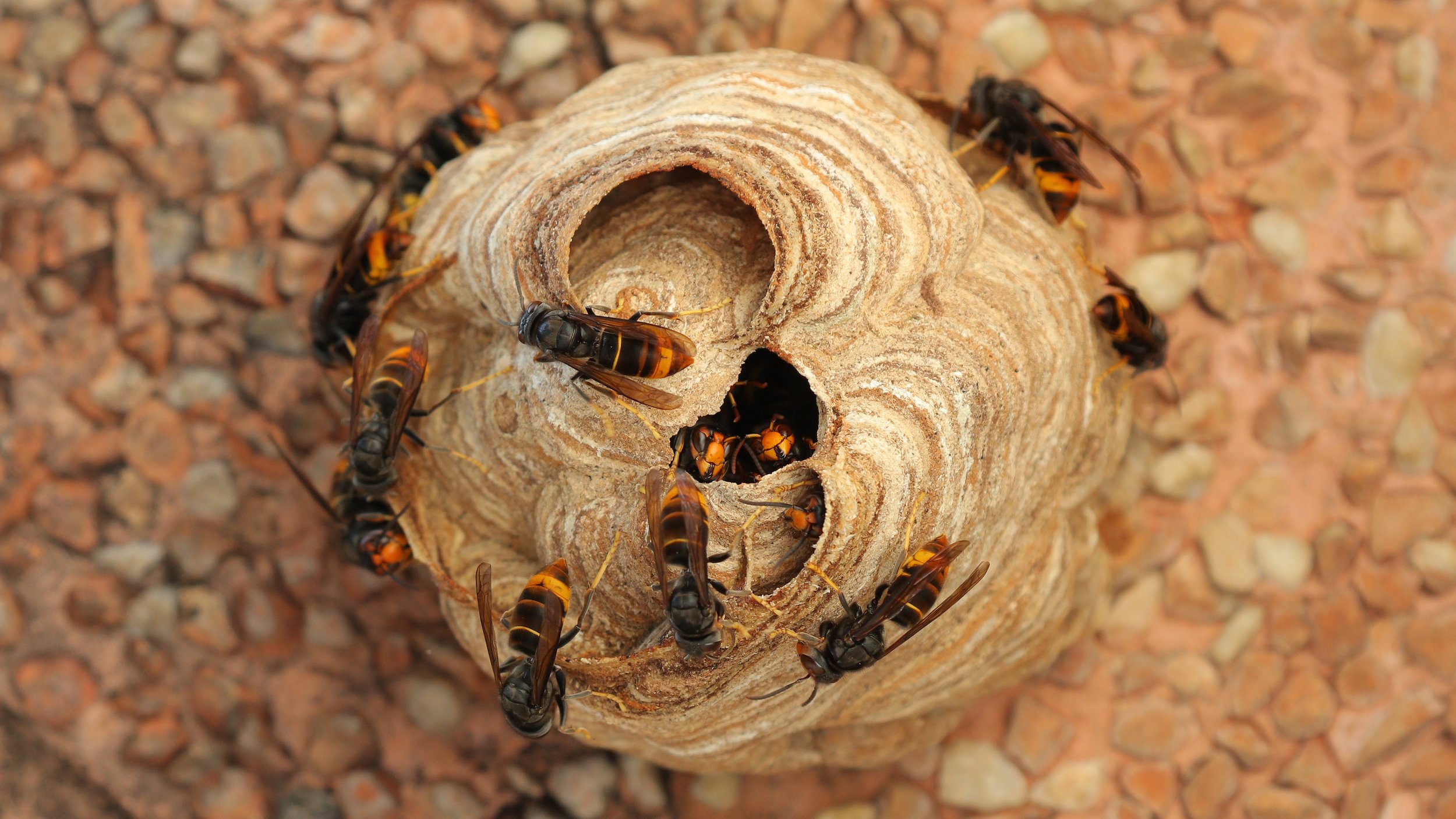Asian Hornets (Vespa velutina) in the uk
Vespa velutina embryonic primary nest.
The accidental introduction and subsequent spread of Asian hornets represents a growing threat to native biodiversity and pollination networks across Europe. First recorded in France in 2004, this invasive predatory hornet has now established footholds in multiple countries, including the Channel Islands and parts of mainland Britain.
Taxonomy and Morphology Of Vespa velutina
The Asian hornet is a subspecies of Vespa velutina, native to Southeast Asia. It belongs to the family Vespidae, subfamily Vespinae. Morphologically, it is distinct from native hornet species (Vespa crabro) by its predominantly dark brown or black thorax, yellow-orange face, yellow tarsal segments on the legs, and a single bright yellow stripe on the fourth abdominal tergite.
Adult workers typically measure between 20–25 mm, while queens can reach up to 30 mm. Nests are often spherical or egg-shaped and may be built high in trees or concealed in anthropogenic structures, making detection challenging.
Pathway of Introduction and Current Distribution
The introduction of the Asian hornet into Europe is believed to have occurred via international trade, likely through the accidental transport of overwintering queens in goods or materials. Following establishment in southwestern France, the species has expanded its range significantly due to its high reproductive potential, broad environmental tolerance, and absence of natural predators in the invaded range.
The Channel Islands, particularly Jersey and Guernsey, have seen increasing activity in recent years, with a growing number of nests being located and destroyed each season. Sightings in southern England have prompted rapid response protocols by government and non-government agencies.
Ecological Impact
The primary concern surrounding the Asian hornet is its predation on pollinators, particularly Apis mellifera, the western honey bee. Foraging hornets frequently station themselves outside hives, capturing returning foragers in flight or at the entrance. Predation rates can be intense, leading to colony stress, reduced foraging success, and eventual colony collapse.
Beyond honey bees, the Asian hornet will prey on a variety of native insect species, including hoverflies, solitary bees, and lepidopteran larvae. The cumulative impact on pollination services and overall insect diversity remains an area of active research, though early evidence suggests significant disruption to local ecological networks.
Monitoring and Management
Eradication of the Asian hornet is feasible only at the early stages of invasion. Monitoring efforts rely heavily on public reporting, strategic trapping, and radio-tracking of captured hornets to locate nests. The National Bee Unit and local agencies in the UK and Channel Islands coordinate nest destruction using extension poles and insecticidal dusting.
Best practices for early detection include:
Deployment of baited traps using attractants such as beer, sugar syrup, or fruit juices
Visual surveillance near apiaries and flowering plants during peak activity periods (spring to early autumn)
Prompt reporting of suspected sightings via official platforms, such as the Asian Hornet Watch app or DEFRA’s online portal
Conservation Implications
The establishment of the Asian hornet in the UK would pose a significant threat to native pollinator assemblages, with cascading effects on plant reproduction, food webs, and ecosystem resilience. Its spread underscores the urgent need for robust biosecurity measures, public engagement in invasive species reporting, and continued funding for ecological monitoring and rapid response infrastructure.
Conclusion
The Asian hornet exemplifies the complex and often rapid ecological consequences of biological invasions in a globally connected world. Continued vigilance, coupled with coordinated management strategies, offers the best hope of preventing widespread establishment in the UK. While eradication remains possible in the early stages, the window of opportunity narrows with each reproductive season.
Early detection and rapid response are paramount.

